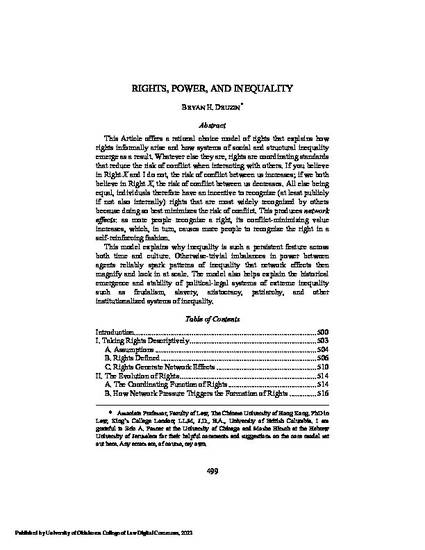
Article
Rights, Power, and Inequality
Oklahoma Law Review
(2023)
Abstract
This Article offers a rational choice model of rights that explains how rights informally arise and how systems of social and structural inequality emerge as a result. Whatever else they are, rights are coordinating standards that reduce the risk of conflict when interacting with others. If you believe in Right X and I do not, the risk of conflict between us increases; if we both believe in Right X, the risk of conflict between us decreases. All else being equal, individuals therefore have an incentive to recognize (at least publicly if not also internally) rights that are most widely recognized by others because doing so best minimizes the risk of conflict. This produces network effects: as more people recognize a right, its conflict-minimizing value increases, which, in turn, causes more people to recognize the right in a self-reinforcing fashion.
This model explains why inequality is such a persistent feature across both time and culture. Otherwise-trivial imbalances in power between agents reliably spark patterns of inequality that network effects then magnify and lock in at scale. The model also helps explain the historical emergence and stability of political-legal systems of extreme inequality such as feudalism, slavery, aristocracy, patriarchy, and other institutionalized systems of inequality.
Keywords
- Social norms,
- Lock-in,
- sticky norms,
- network effects,
- law and norms
Disciplines
Publication Date
Summer June, 2023
Citation Information
Bryan H. Druzin. "Rights, Power, and Inequality" Oklahoma Law Review (2023) Available at: http://works.bepress.com/bryan_druzin/40/
